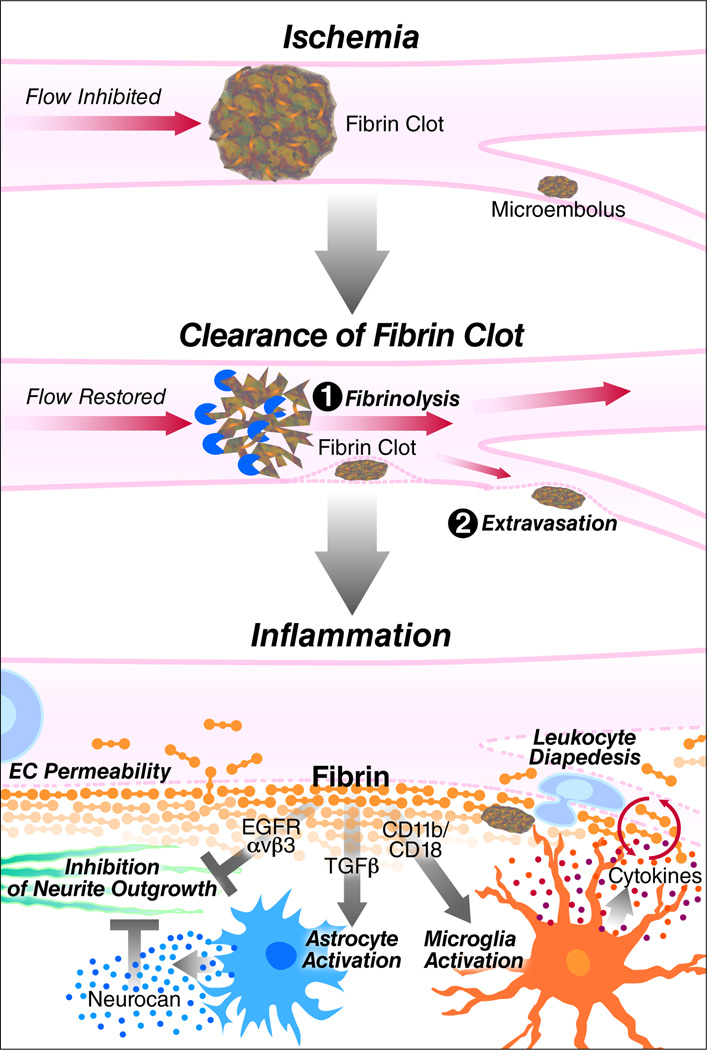Figure 2.
Fibrin during thrombus formation and secondary damage in stroke. In stroke, a fibrin clot or fibrin-stabilized thrombus occludes a vessel, stopping blood flow and causing ischemia. The fibrin clot is cleared enzymatically by fibrinolysis or by extravasation in the CNS. Ischemia–reperfusion is followed by inflammation and disruption of the BBB. Deposition of fibrin into the CNS parenchyma results in microglia activation via CD11b/CD18, leading to increased inflammation; astrocyte activation via TGF-β, resulting in neurocan deposition; and inhibition of neurite outgrowth through αvβ3 and EGF receptor. Fibrinogen-induced proinflammatory and neurodegenerative changes in the CNS may exacerbate damage after stroke.

